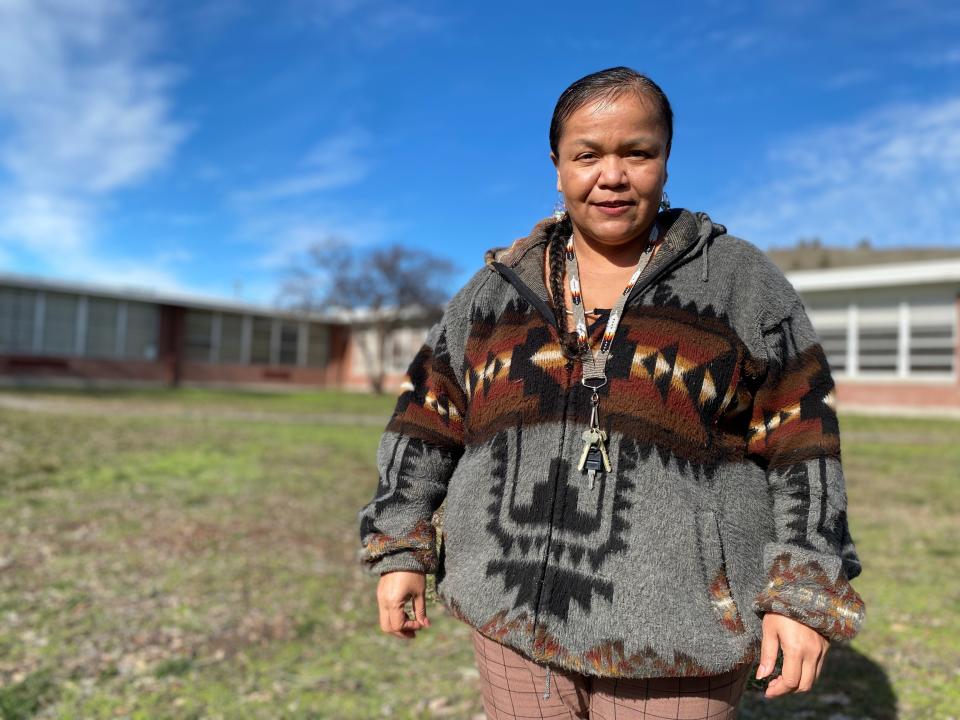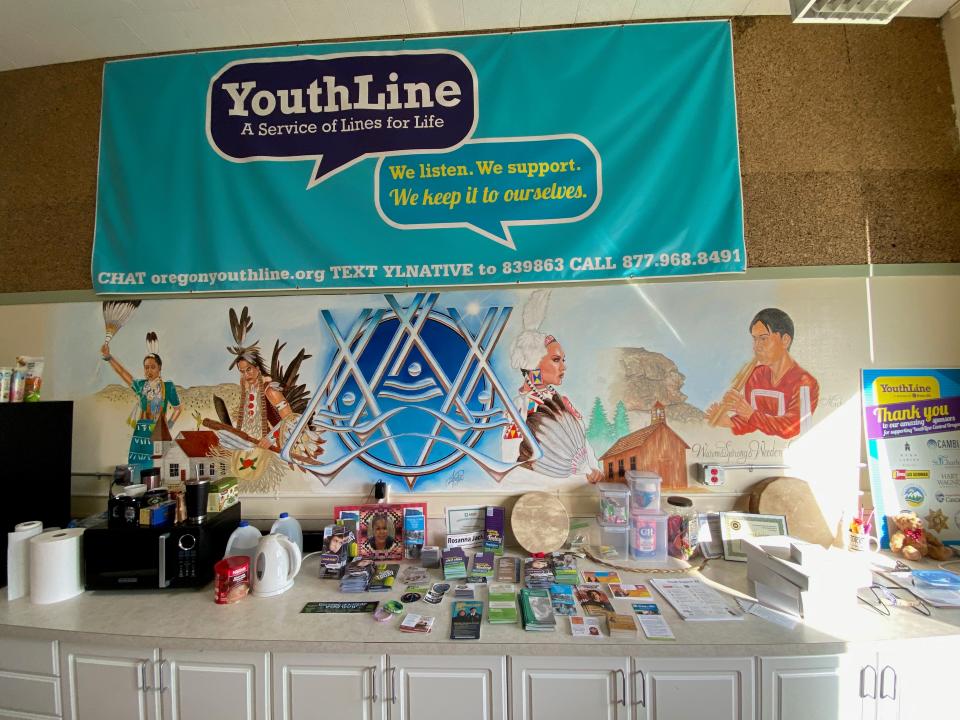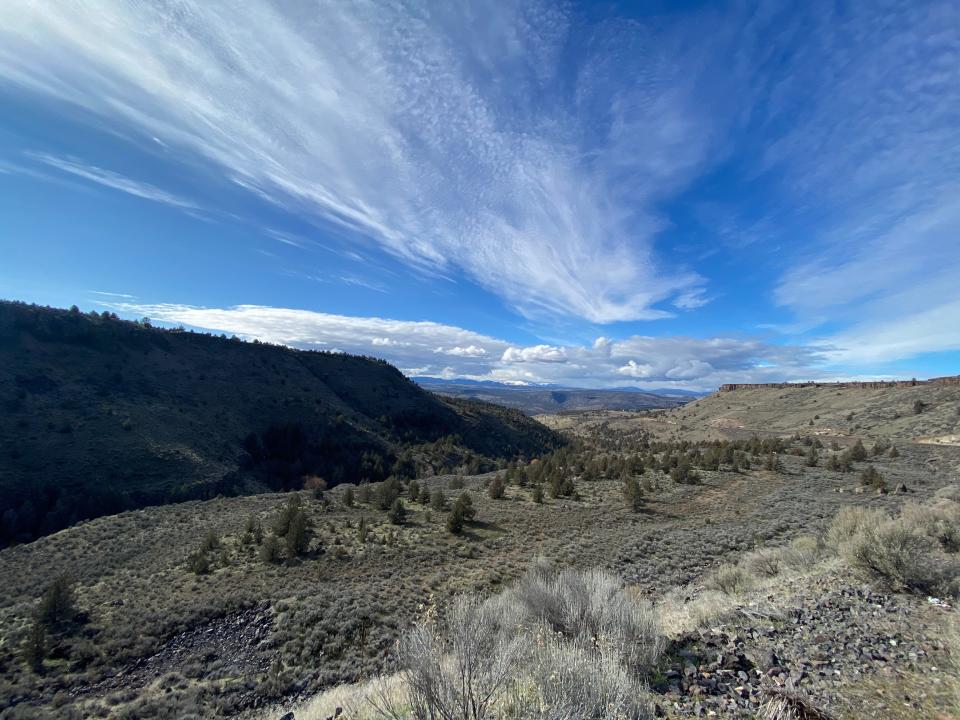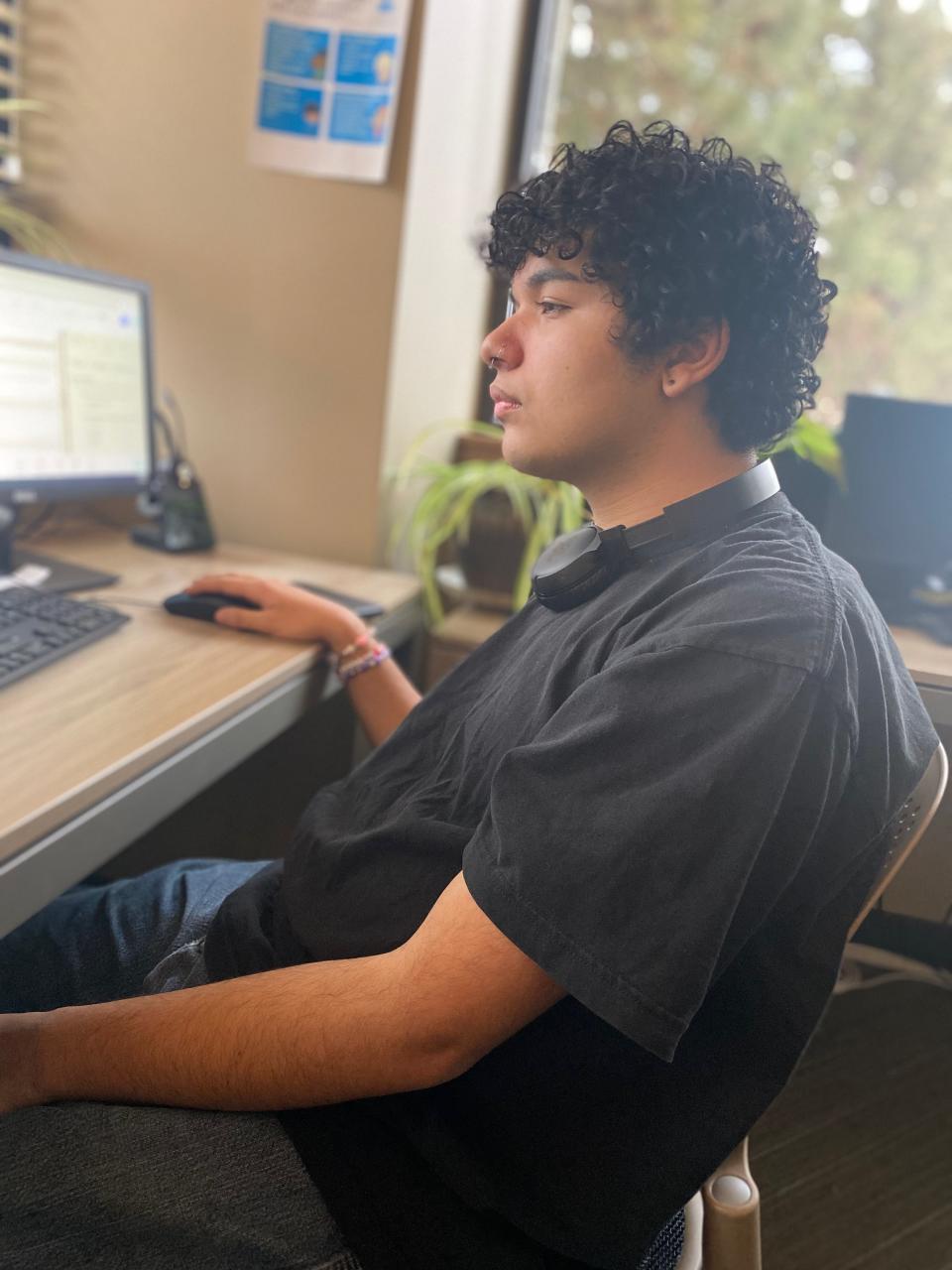Youthline Is Starting a Crisis Call Line Run by Native Youth, for Native Youth

If you or someone you know is thinking about suicide, you can speak with a trained listener by texting 988, the national Suicide and Crisis Lifeline.
WARM SPRINGS, Ore. — Rosanna Jackson, an enrolled member of the Confederated Tribes of Warm Springs here, counts herself as one of the resilient ones. Her childhood in the 1970s and 80s was tough. Home didn’t always feel like a safe place to be.
There’s a stigma that leads to people “not talking about their feelings and not wanting everyone to know that they’re hurt or in pain,” she said of many in her community who have dealt with similar childhood trauma.
But that silence can be lethal, Jackson said. Now an adult who has dedicated her life to helping her tribal members be more resilient, Jackson is leading the effort to create the nation’s first suicide helpline staffed by and designed for Native youth.
“I’m hoping that my youth will come out of their shell and help each other,” Jackson said. “It’s OK to not be OK. It’s OK to talk about what’s on your mind.”
Native youth have one of the highest rates of suicide of any demographic in the country, according to federal data. While American Indian and Alaskan Native teenagers reported feelings of sadness and hopelessness that tracked with national averages, they were more likely than their peers of other races to seriously consider suicide, to make a plan to die by suicide and to attempt suicide. That’s according to the latest youth risk behavior survey for high schoolers by the U.S. Centers for Disease Control and Prevention.

Native leaders say their young people are facing an acute mental health crisis and could particularly benefit from the kind of support a helpline run by and for Native youth would provide.
There are only a small number of suicide crisis lines in the country that are staffed by young people. Youthline, the 21-year-old program in Oregon that is behind Jackson’s effort, is one of them. California and Arizona also have long-standing peer lines for teenagers.
If it’s successful, Jackson’s program would be the first crisis line in the nation designed for Native youth.
Related: 3 Native American women head to college in the pandemic. Will they get a sophomore year?
While many of the issues affecting Native youth are universal to young people today, including the isolation and loss suffered during the pandemic and the threat of climate change, other reasons for desperation in this group are more specific. They include intergenerational trauma (when harmful stress experienced by adults when they were children affects how they parent), an ongoing addiction epidemic, poverty and a lack of access to services like mental health care.
Like most crisis lines, the new line will be anonymous. Jackson wants to offer young people the chance to reach out for help to someone who understands their culture, but without fear that their problems will be the talk of the community.
Annamarie Caldera, 18, who also lives on the Warm Springs reservation, is on track to be the first young person to respond to texts — under an alias — at Youthline Native. She was recruited by Jackson last spring and, nearly a year later, has almost completed the 64 hours of training required to answer calls.

Caldera said she was excited at the prospect of finally taking calls. “I get to help people and pass on my vibes to them,” she said.
While she’s dedicated to supporting her Indigenous peers, Caldera said it’s important that people know that Native teenagers aren’t all depressed.
“I’ve had a few people ask me on my social media if … all we think about is killing ourselves and drinking and smoking,” she said. Most of those who’ve asked, she said, are white. “It’s not accurate — not at all.”
In 2022, the U.S. government authorized 988 as the new suicide prevention and mental health crisis number. That line is free to anyone in the country to call at any time. Volunteers and staff at more than 200 crisis centers answer approximately 5 million annual calls and texts to 988. People who call are offered the chance to connect to a service for veterans or for LGBTQ+ youth and young adults, two groups at especially high risk for suicide.
But there is no national Native suicide prevention helpline.
Related: The pandemic knocked many Native students off the college track

Oregon’s Youthline is part of the 988 network and there are adults monitoring the line at all hours, even when young people aren’t available to take calls. Youthline’s existing call takers are prepared to talk to anyone who texts “teen2teen” or “native” to 839863. Young people can also call 877-968-8491 or start a chat from the Youthline website.
Crisis line organizers agree that counselors must be prepared to respond to all callers no matter their age, race, gender or sexual orientation.
And yet, talking to someone with the same background can be incredibly healing, especially for Native people, said Rochelle Hamilton, who heads a line called Native and Strong that fields calls from Native people with a Washington state area code.
“If you are an Indigenous person — often if you go to talk to a therapist or counselor who is non-Indigenous, you spend the majority of your time talking about what it is to be Indigenous,” said Hamilton, an enrolled member of the Ehattesaht First Nation and a descendent of the Tulalip tribes.
Not only is that annoying and exhausting, she said, it prevents the therapist and client from addressing the actual crisis. And the anticipated hassle means many Native people in crisis just never pick up the phone, Hamilton said.
“Indigenous people often and for good reason don’t have a lot of trust outside of their communities,” she said. “They want to look to each other when they need something.”
When someone calls Native and Strong, the counselor answers by introducing themselves and identifying their tribal or cultural affiliation. Callers know right away that the counselor is saying “I’m Indigenous and I know where you’re from,” Hamilton said.
A non-Native state representative, Tina Orwall, identified the need for a tribal 988 line and advocated for its funding. An existing crisis call center got the contract from the state. The call center consulted formally with tribal leaders who helped to design the Native and Strong program.
But even with funding secured, Youthline Native has faced more hurdles. Jackson initially had six teenagers interested in being part of the helpline. But only Caldera is close to completing the training. Three others have just started.
Peer-to-peer crisis lines for young people are always hard to staff. Young people are often required to take calls from a physical call center as a measure of protection for their own mental well-being. That creates geographic limits on where volunteers can be pulled from.
Partly to attract a more diverse group of call takers, Oregon’s Youthline recently added three new call centers: one in the diverse neighborhood of East Portland, one in Warm Springs and one in Bend, a small city in Central Oregon.

Related: A surprising remedy for teens in mental health crises
When it’s up and running, the small Warm Springs call center will be a lot like the one in Bend, where Eddie Lopez, 17, is among the young people answering the phones.
On a chilly February night Lopez sat in the cozy call center with half a dozen other teen call takers and three adult supervisors. Lopez moved to Bend, about an hour south of Warm Springs, when he was 15. The transition was brutal, he said. But the gracious welcome he was offered when he arrived inspired him to give something back.
“Obviously, I won’t understand people from all walks of life,” said Lopez, whose family is Mexican-American. But “mental and emotional support is kind of universal in a way,” he said. “Everyone likes to be validated. Everyone likes to feel like they’re not alone. I’m helping even if I don’t understand them as people.”
Lopez read a message on his computer screen from a person saying they felt unloved.
“I also feel better when I talk about my feelings,” the texter wrote. “I just want to heal from them, but I don’t know how to heal?”
The key when texting people who reach out for help is to make sure they know that they are not alone and that their feelings are valid, Lopez said. The teens are taught to avoid giving specific advice; instead, they ask questions.
“I’m very thankful you shared that with me,” Lopez texted back under his alias. “It takes a lot of bravery to be vulnerable. Have you talked to anyone about what you’ve been going through?”
The goal is for the texter to say how they will take care of themselves — for that evening, at least. “Since we’re so short term, we kind of have to, like, motivate them to want to help themselves in a way,” Lopez explained. The teen volunteers may list things other people do to calm down, like take a walk or listen to music.

Counselors on the Native and Strong line follow the same protocol, but they also list culturally specific practices, like smudging (the burning of sacred herbs), talking to an elder or eating a traditional food.
Both Hamilton and Jackson said they are determined to prove the need for Native-specific call lines and then expand their models. They want to see a nationally available, Native-run helpline available to every Indigenous person struggling with thoughts of suicide.
There was some encouraging news buried in the most recent CDC data on suicide released last year. The rate of suicide for young people fell 8 percent in 2022 and for Native people it fell 6 percent. Yet experts say a one year drop is hardly a trend.
Back in Bend, a call taker named Sarah Hawkins, 18, was chatting with someone worried about a rumor being spread about them at school. Following protocol as the conversation wrapped up, Hawkins asked the middle schooler what would help them tonight.
“IDK,” the texter replied. “Frankly, just talking about it made me feel so much better.”
This story about Native American suicide prevention was produced by The Hechinger Report, a nonprofit, independent news organization focused on inequality and innovation in education. Sign up for the Hechinger newsletter.
Stay up-to-date with the politics team. Sign up for the Teen Vogue Take
Originally Appeared on Teen Vogue
Want to read more Teen Vogue health coverage?


